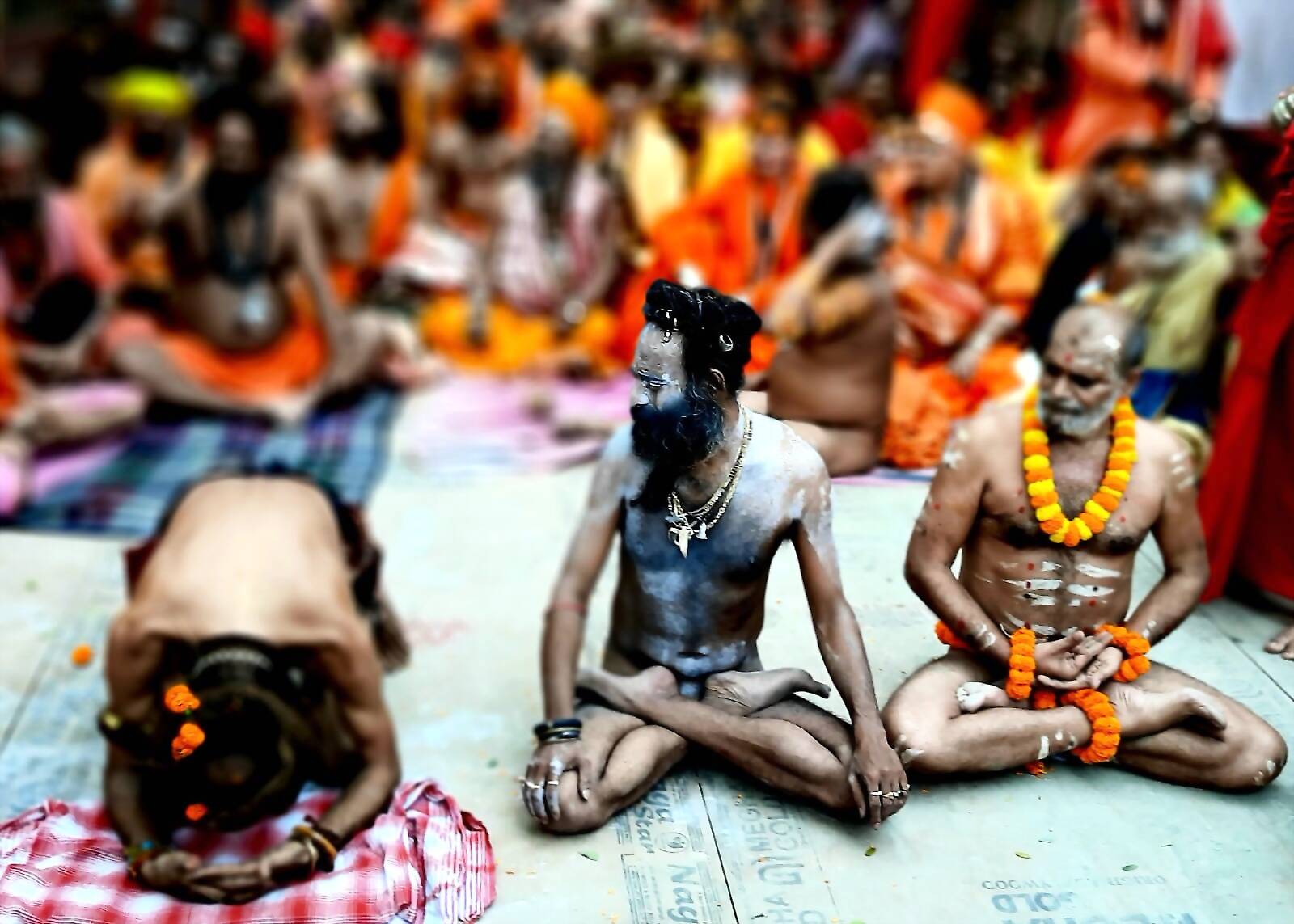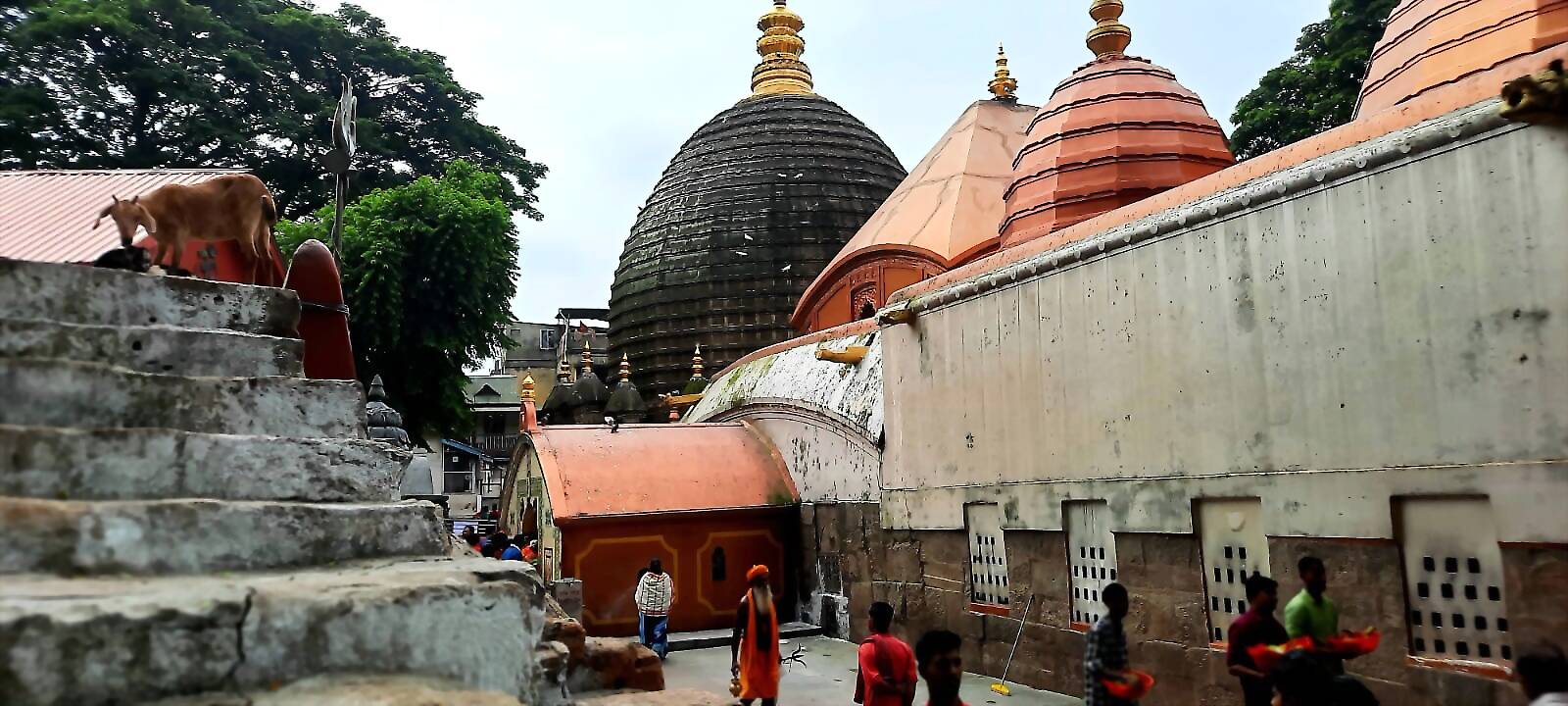
views
Right from the break of dawn, the Naga Sadhus from the Dasnam Juna Akhara at the Shakti Peetha Kamakhya Temple in Guwahati were busy preparing themselves for two special occasions. First, the International Yoga Day and second the Dhwaja Parikrama or the troupe flag march around the holy shrine of Goddess Kamakhya atop the Neelachal hills on the eve of the annual Ambubachi Festival.
Smeared with their trade mark “bashma” (ash) all over the body and the rudraksha mala around their neck and wrist, the Naga Sadhus prepared themselves to perform their yoga on the International Yoga Day. The Sadhu joined the world in promoting their unique “Yoga” from the sacred lands of Himalayas. Control over breath is the essence of Yoga and well-being of the mankind at its core, expressed the Naga Sadhus.

(Image: News18)
“We would like to congratulate all on this International Yoga Day and request all to observe the day adhering to all Covid protocol. We Shri Panch Dasnam Juna Akhara performed Sury Pranam, Pranayama and our regular yoga practices on this day. This is a Shakti Peetha and Sadhana Peetha too and doing jap (recitation) once gives you the blessings of ten japs (recitation). We come here for three days every year and these three days give us the spiritual nourishment for the whole year. When we perform yoga here, it is equivalent to hundred years of meditation. Yoga is a simplistic form to achieve salvation. Kumbh comes after every 12 years and Amba or Ambabasi every year. Ambubachi gives you the same accomplishment as the Kumbha,” says Nityananda Giri Maharaj.
Ardent worshipers of Shiva in extreme reverence, the Naga Sadhus exhibited several intricate yogic postures that they claim as an integral part of the “sadhana”.

(Image: News18)
“The Shakti achieved at Kamakhya is infinity and what we attain here during these three days of “tapa” (worship) is endless. Its “param prapti” (supreme attainment) and what we attain performing yoga here is threefold than doing it anywhere else,” says the “Standing Baba” who has stood for 108 hours in one of his “Tapasya” (penance).

(Image: News18)
The festival restricted to its basic ritual during the two years of the pandemic, returned to its fervour this year. Eastern India’s biggest congregation of Hindu devotees, Ambubasi is expected to attract more than 10 lakh devotees this year despite the state government’s appeal for a restricted visit to the divine temple owing to inclement weather and several landslips in the newly constructed approach way to the temple. Unlike previous years, camps to house the devotees have been established by the district authorities where vehicles have been barred from ascending the temple road during the three days of the festival.

(Image: News18)
Ambubachi, meaning “spoken with water” signifies that the rains expected during this month make the earth fertile and ready for procreation. Daily worship is suspended during this period. All agricultural work like digging, ploughing, sowing and transplanting of crops are avoided. Devotees avoid cooked food during these days. On the fourth day, used utensils, clothes and other items are cleaned and symbolically purified by sprinkling water.
The Ambubachi festival is celebrated during monsoon in the belief of Goddess Kamakhya going through her annual cycle of menstruation at this time. The temple is closed for three days beginning from the seventh day of the “Ashadh” month of the Hindu calendar until the tenth day as part of traditional seclusion during menstruation. On the twelfth day, the doors are opened ceremonially and a big fair is held at the temple. It is believed that the fertility brought in by the Goddess will bless the devotees and nurture them.
The Significance of Ambubachi Festival
The worship of Goddess Kamakhya begins after cleansing and other rituals. Entry to the shrine is considered to be auspicious after these rituals are performed. The prasad is also distributed among the devotees. The prasad is distributed in two forms – Angodak and Angabastra. Angodak, meaning ‘water from the spring’ signifying the fluid from the body and Angabastra means the cloth covering the body – a piece of the red cloth used to cover the stone yoni during the days of menstruation.
The Ambubasi mela is also known as Ameti or Tantric fertility festival since it is closely associated with the Tantric Shakti cult prevalent in eastern parts of India. Even some Tantric Babas make their public appearances only during these four days. The rest of the year, they remain in seclusion. Some Babas are seen displaying their psychic powers like putting their heads in a pit and stand upright on it, standing on one leg for hours at a stretch, among others.
Lakhs of pilgrims, starting from Sadhus to householders, from all over India, come to Guwahati every year to observe this festival. These include Sanyasins, black clad Aghoras the Khade-babas, the Baul or singing minstrels of West Bengal, intellectual and folk Tantriks, Sadhus and Sadhvis with long matted hair etc. Foreigners from too come to seek blessings of Goddess Kamakhya.
Read all the Latest News , Breaking News , watch Top Videos and Live TV here.














Comments
0 comment